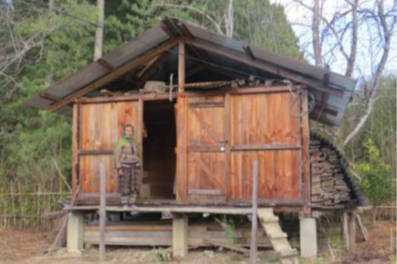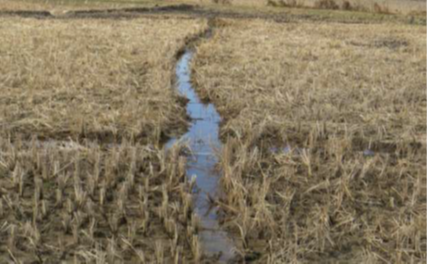


The study examines the indigenous practices among tribal communities in the Lower Subansiri District of Arunachal Pradesh area to document the indigenous practices followed in agriculture. The study was conducted in the year of 2018 and the information was collected using a structural schedule, semi-structured interviews, photo documentation, field observation, and respondent observation from the study area. This study contends that indigenous knowledge with scientific reason should be identified and applied to agriculture fields. It also discusses the challenges of proposing this indigenous knowledge in the research area, as well as a plan for employing to know the knowledge level in agriculture to achieve food security, livelihood, and ecological balance on a long-term basis. For the study, a total of 120 people were chosen. Finally, it can be concluded from this research that accurate identification and documentation will lead to food security and sustainability in the study area provided appropriate extension interventions for indigenous knowledge are implemented.
INTRODUCTION
Indigenous knowledge is a system of beliefs, ideas, and behaviours that guide people residents in their usage of the land and natural resources. Local tribal community people create and maintain indigenous knowledge in order to meet their basic requirements for food, shelter, health, spirituality, and savings Indigenous knowledge is frequently customized and adapted to the local natural conditions as well as the social and cultural beliefs of community members. This is not static but rather changes in ecological, economic, and socio-political situations, depending on community members' originality and innovation, as well as the influence of other cultures and local technologies.
Through the long path from primitive agriculture, tribal progenitors have developed several farming techniques through their age-old experiments by their experience in an attempt to overcome numerous problems faced during the farming operations. This knowledge is based on many generations of insight gained through close interaction within the natural and physical micro-environments.
Tribal farmers' knowledge has been the mainstay of indigenous agricultural practices. Agriculture practices managed by farmers in tribal areas embody practices that are logical and different from those contained in agriculture science imparted this from formal institutions (Ba et al., 2018; García, 2021). Tribal farmers' work under their vast agricultural knowledge is uniquely found in the spaces between the interests sectors, and its linkages between the eco-friendly productivity are maintained under local resource scarcity conditions.
MATERIALS AND METHODS
Lower Subansiri District of Arunachal Pradesh was purposively selected for the study considering the availability of tribal farmers engaged in indigenous agricultural practices. In the district two blocks namely, Ziro-I and Ziro-II were selected based on the highest area of tribal farmers following the indigenous practices. From the respective block, four villages were selected based on the maximum population.
The judge's opinion was used to determine the rationality of the collected indigenous practices. Among forty indigenous agricultural methods, twenty-seven indigenous agricultural practises were founded rational, and thirteen indigenous agricultural practises were founded irrational. The information was gathered from 120 tribal farmers who were chosen by using proportionate random sample techniques. The data was collected from the respondents using a well-structured interview schedule. The replies to a questionnaire assessing the level of knowledge about twenty-seven indigenous farming methods were analyzed into two categories: correct and incorrect. The data were interpreted by using simple percentages. The frequency of the farmer’s knowledge from each of the practices was calculated and expressed in percentage.
RESULTS AND DISCUSSION
Keeping puppet dolls to scare away birds
In the old-time (or even now), farmers also use scarecrows in the field to scare away the birds. Normally scarecrows are built-in the crop field. It seems to work so you can still spot them on the farms sometimes today (Natarajan, 2001; Ashokkumar, 2021). Even some modern Garden books suggest the use of scarecrows in the cultivable area is an effective method on hilly zone rice farms (Figure 1).
|
|
|
Figure 1. Puppet dolls to scare away birds |
Storing harvested grains in storeroom called “Nesu”
"Nesu" was food grains storage room created by tribal peoples for harvesting crops and drying them in the sun before storing them to reduce moisture content. It's used to reduce the spoiling of food grains due to increased moisture content in food grains encourages the formation of fungus and moulds on stored grains, causing them to decay. It also protects seed-borne diseases and pests (Figure 2).
 |
|
a) |
|
|
|
b) |
|
Figure 2. Harvested grains in storeroom “Nesu” |
Paddy nursery is elevated in the paddy field
Paddy is grown in an elevated place called a nursery and then the crop was transplanted to the main field for 4 main reasons. Because irrigating a field is simple and planting the crops well before the monsoon for allowing to use the water before transplanting (Termaric, 2014) (Figure 3).
 |
|
Figure 3. Paddy nursery is elevated in the paddy field |
A small pit (shettey) dug in each terrace in a series of terraces where paddy is grown
The method of cutting flat regions out of a hilly or mountainous environment in Arunachal Pradesh to produce paddy crops is known as "shettey" (Terrace farming). It's a tradition that dates back to the rice fields, (Sangma, 2017; Kanathila, 2021). Terraced fields reduce erosion and surface runoff, and they can be utilized to maintain irrigation dependent on crops like paddy. Terrace farming is very beneficial because it decreases soil erosion and helps to provide more space for farming (Figure 4).
 |
|
Figure 4. Small pit (shettey) dug in each terrace of paddy field |
Water outlet made up of bamboo (Uiicho)
Bamboo Irrigation System is a 200-year-old system which is called “Uiicho” in Arunachal Pradesh of tapping stream and spring water by using bamboo pipes and transporting water from higher to lower regions through gravity. The flow of water into the pipes is controlled by manipulating the pipe positions. In Arunachal Pradesh, the "Bamboo irrigation system" is practiced widely (Kesha et al., 2015). The bamboos are used by the farmers for irrigation purposes in paddy fields. Irrigation is the procedure of watering plants in order to make them hydrated so that they are healthy (Figure 5).
|
|
|
Figure 5. Water outlet made up of bamboo (Uiicho) |
CONCLUSION
The findings of this study vividly concluded that the tribal farmers have greater agricultural responsibility, which motivates them to connect more with their environment. As the results concluded, adopting indigenous agricultural practices results in an environmentally friendly, and it is vital to promote these traditions in order to preserve and spread them to other places.
The study's findings denoted that the majority of tribal farmers in the study region had a high level of knowledge of indigenous agricultural practices in paddy production. This is because the tribal farmers believed that they had a high level of knowledge on indigenous farming, by their own experience which may be gained from their progenitors. For the effectiveness of indigenous paddy cultivation methods, extension workers, research associates, and policymakers should identify and include them in the technology transmission process with adequate documentation which is highly utilized by the low cost of input.
ACKNOWLEDGMENTS: None
CONFLICT OF INTEREST: None
FINANCIAL SUPPORT: None
ETHICS STATEMENT: None
Ashokkumar, P., Giri, G. V. V., & Pandya, K. (2021). Parotid abscess with facial palsy in a patient on hemodialysis: A management challenge. Annals of Dental Specialty, 9(3), 1-4.
Ba, Q. X., Lu, D. J., Kuo, W. H. J., & Lai, P. H. (2018). Traditional farming and sustainable development of an indigenous community in the mountain area—A case study of Wutai Village in Taiwan. Sustainability, 10(10), 3370.
García, E. M. C. (2021). Management decisions through the neuro management in the universities of zone 3 of Ecuador. Journal of Advanced Pharmacy Education and Research, 11(3), 88-94.
Kanathila, H., Peter, M., Bembalagi, M., & Jaiswal, R. S. (2021). Awareness Towards personal protective equipment among dental professionals in India during covid-19 outbreak- A survey. Annals of Dental Specialty, 9(3), 82-88.
Kesha, R., Patel, J. K., & Bhati, G. S. (2015). Adoption regarding eco friendly technology adopted by the paddy growers to combat environmental hazards in paddy cultivation. Agriculture Update, 10(4), 327-334.
Natarajan, M. (2001). A study on knowledge and adoption of indigenous farm practices among tribal farm women of kalrayan hills. Unpublished M.Sc. (Ag.) Thesis, Annamalai University, Annamalai Nagar.
Sangma, C. M. (2017). A study on knowledge and adoption of indigenous agricultural paddy cultivation and dairy management practices among the tribal farm women of west Garo hills district of Meghalaya. Unpublished M.Sc. (Ag.) Thesis, Annamalai University, Annamalai Nagar.
Termaric, O. (2014). A study on yield gap and constrains of paddy farmers in Bishnupur district of Manipur state. Unpublished M.Sc. (Ag.) Thesis, Annamalai University, Annamalai Nagar.
 This work is licensed under a Creative Commons Attribution 4.0 International License.
This work is licensed under a Creative Commons Attribution 4.0 International License.